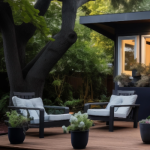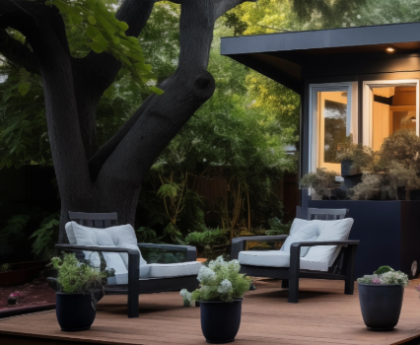
Accessory dwelling units are small units that sit within a larger residential property, like the unit shown above. (photo courtesy of Kitchen Fer by Gallego’s Construction)
Beverly Hills City Council approved an ordinance that expands the development of accessory dwelling units and junior accessory dwelling units in a meeting on March 11. The update to the city code is a response to changes in state ADU law and will incentivize ADU production, according to city planner Masa Alkire.
“We’ve consistently over the last three years had ADU production above what we anticipated in our conservative estimate in our latest iteration of the housing element,” Alkire said. “This provides for additional incentives to produce ADUs.”
ADUs are units that sit within a larger residential property, often rented out by the homeowner. ADUs can be separate building structures on a lot – such as a backyard cottage – or a converted space within or attached to an existing home – like a garage or pool house. Sometimes called “granny flats” or “in-law units,” they are considered a form of affordable housing by the California Department of Housing and Community Development, and bring the city closer to fulfilling the state housing element requirement.
The city code allows single-family homes to contain a maximum of one JADU and one ADU per home. Compared to ADUs, JADUs have a smaller square footage and don’t require a full kitchen. For a home to have a JADU, the homeowner must live on the property. However, no owner occupancy is required for regular ADUs.
For multifamily homes, two detached ADUs or one attached/converted ADU is permitted. Additionally, non-livable space in a multi-unit building can be converted into ADUs, up to 25% of existing units in the building.
The new code will also allow ADU builders to make requests for more height or floor area in their units. Similarly, it allows ADUs in some areas of the city – such as North of Santa Monica Boulevard – to be larger in square feet and in taller in height than what the state law limits. These exceptions are aimed at incentivizing the construction of ADUs throughout Beverly Hills.
Hillside and Trousdale will not see the larger ADU regulations due to residents’ concerns over preserving views. ADUs constructed in the two neighborhoods will follow standard California ADU regulations.
However, Trousdale residents expressed concern over the standard California regulations as well, stating that they exceed Trousdale height restrictions of 14 feet.
“Anybody who has a house in Trousdale – use mine as an example – my downslope neighbor can put an ADU right smack in the middle of my view above Trousdale height restrictions … and totally mess up my view,” Trousdale Homeowners Association secretary Karen Platt said in the meeting.
Alkire said because intrusions on view could be considered subjective, it would be difficult to add a restriction limiting obstruction of view to the city code in Trousdale. Mayor Julian Gold recommended the homeowners association work with city staff to add a future amendment addressing the issue.
The updated ADU guidelines will now be submitted to the California HCD for review.



